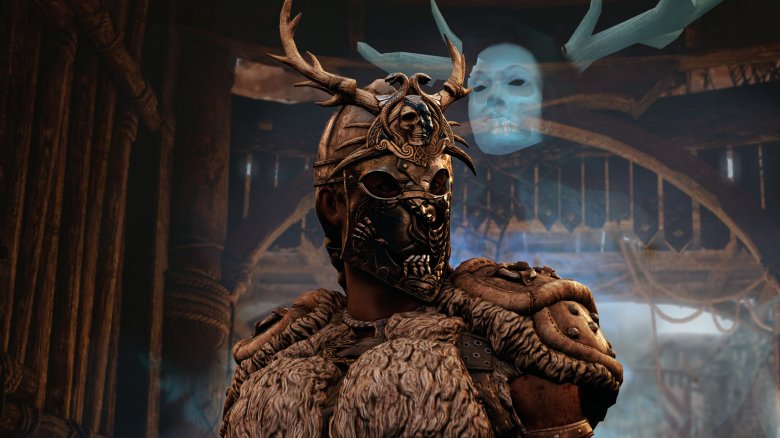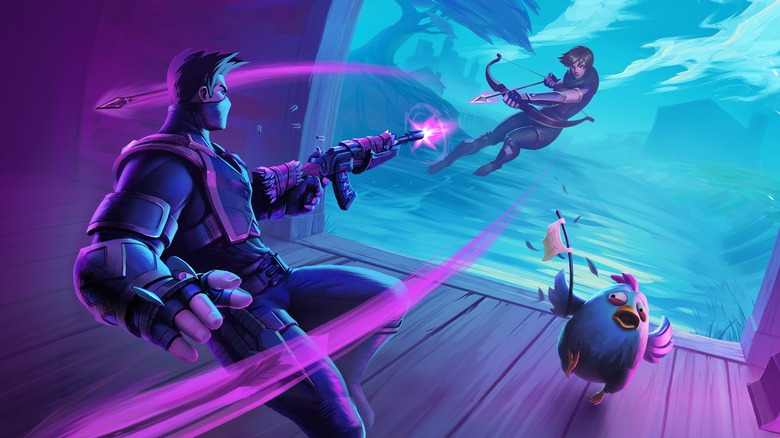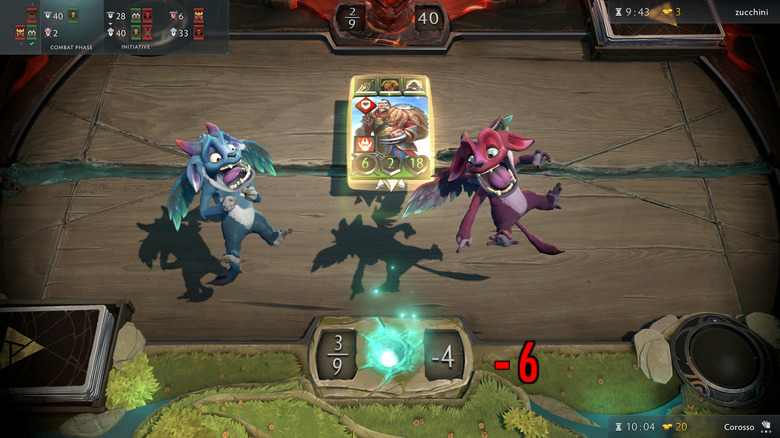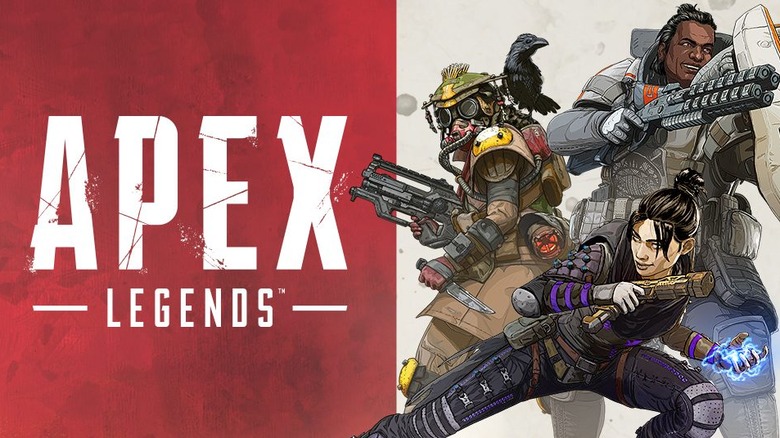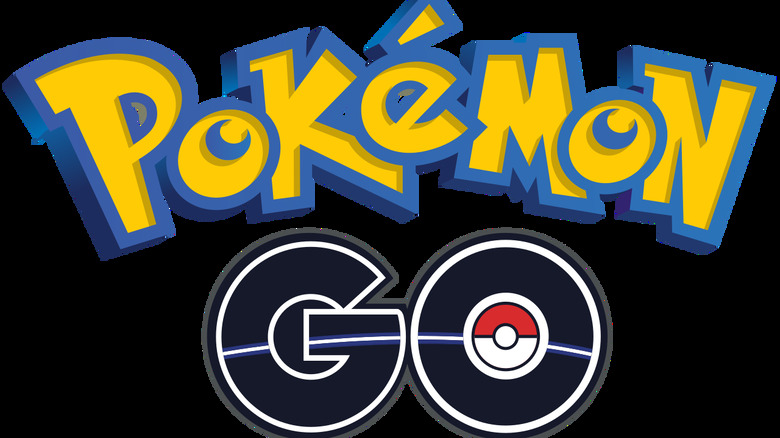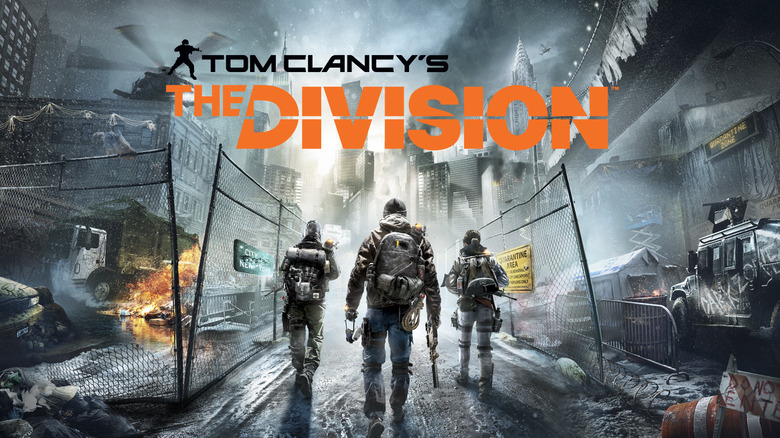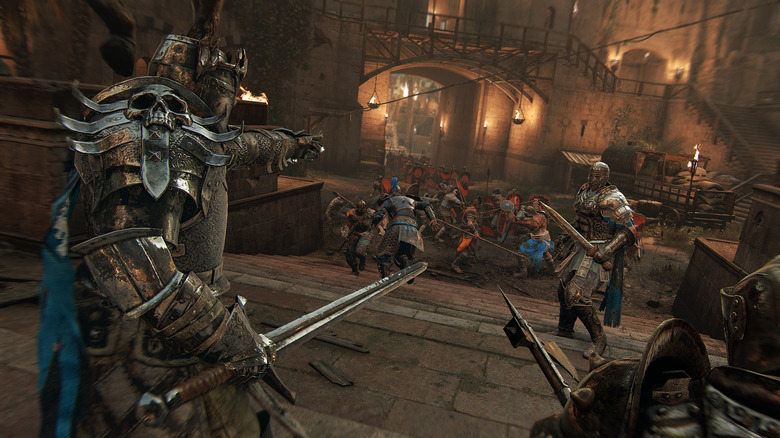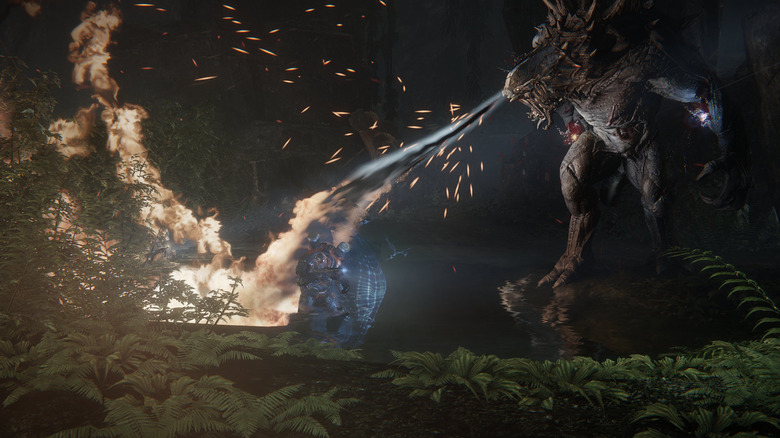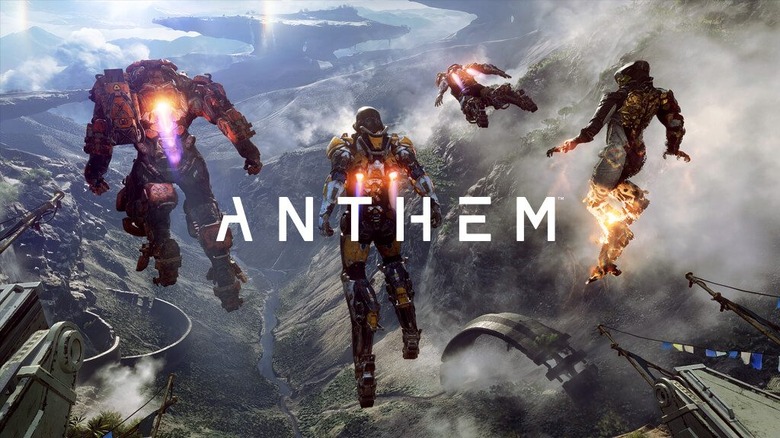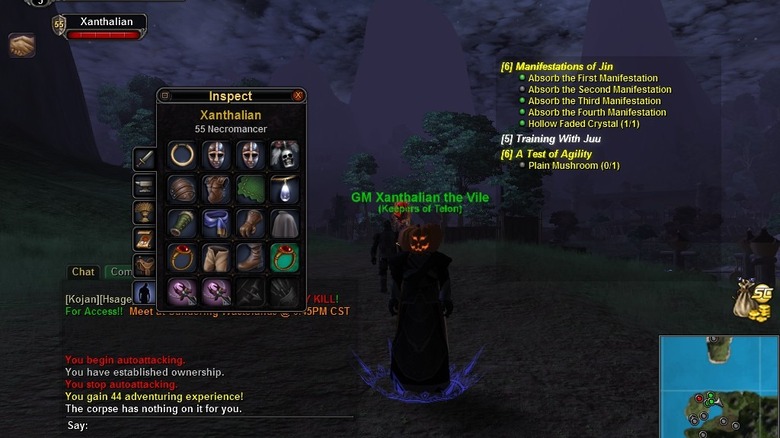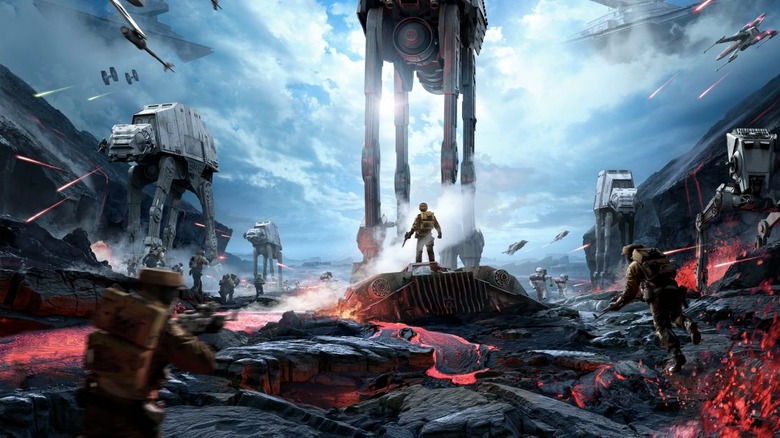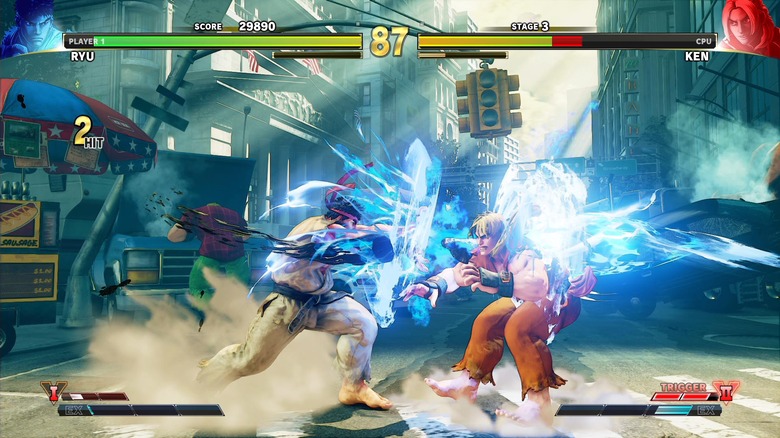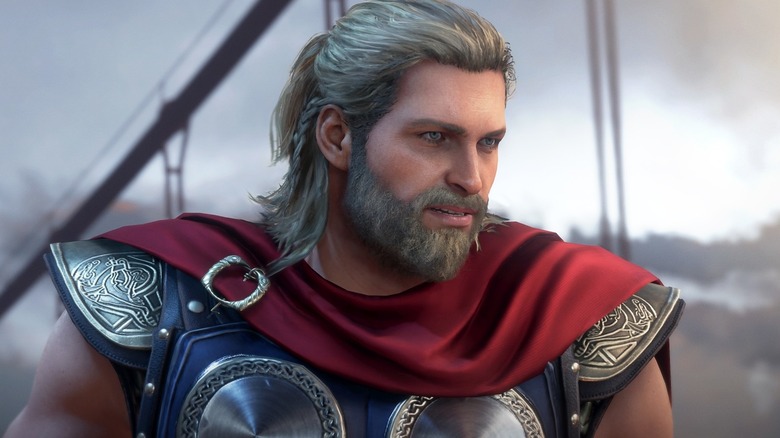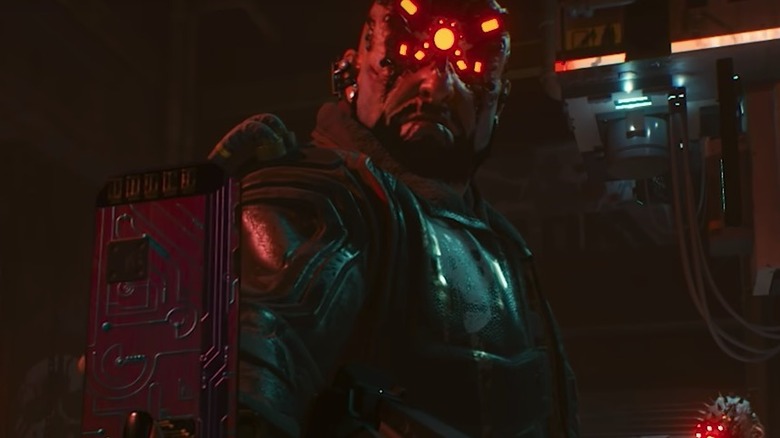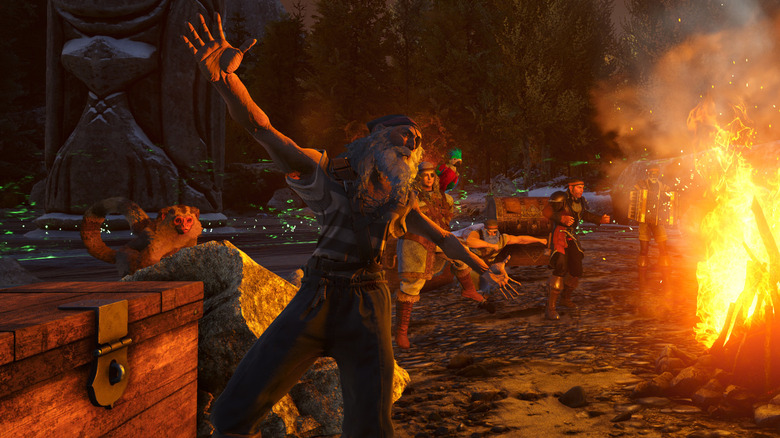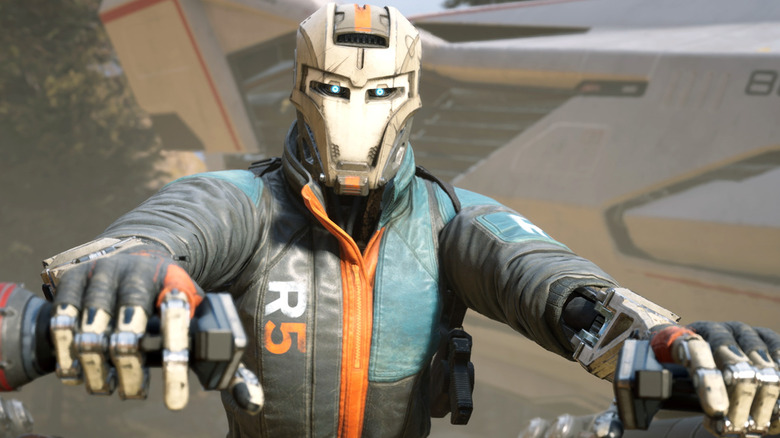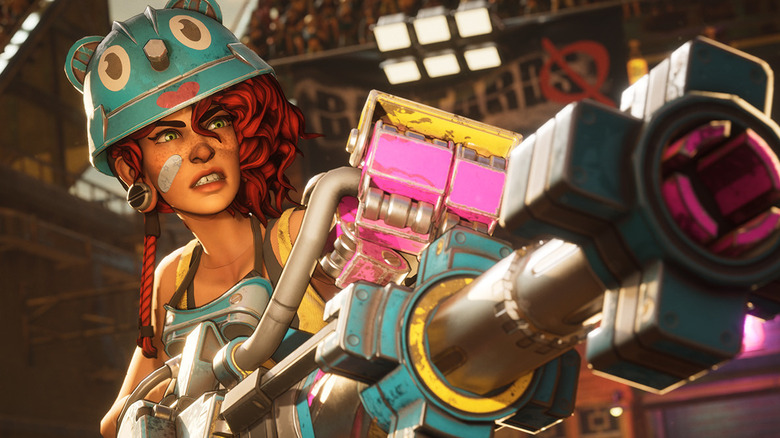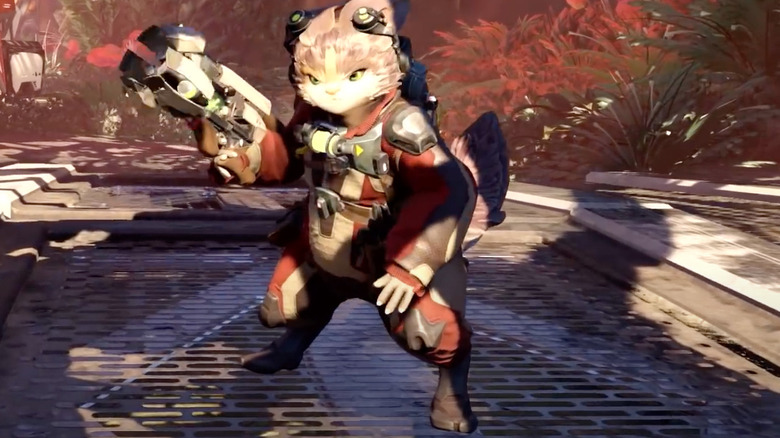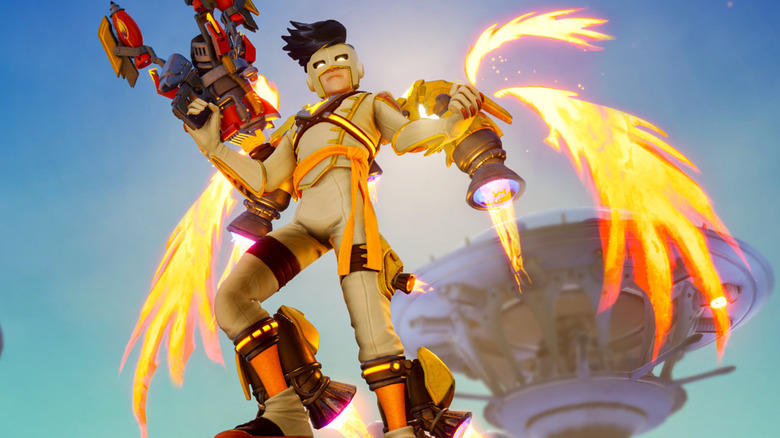Games That Lost Almost All Of Their Playerbase Within Months
Given the hit-driven nature of the industry, releasing an online game has always been considered a risky business endeavor, and the stakes keep getting higher with the rising costs of development. While Fortnite made more money than any other game in history during a single year in 2018, overall video game profits are projected to decline for the first time in nearly 25 years in 2020 as novel ideas become harder and harder to come by. Even being associated with a popular media franchise like Star Wars or Pokémon isn't a surefire formula for long term success. Gamers have no shortage of options, so establishing a dedicated playerbase is always an uphill battle.
That said, actually finishing the game, beta testing it, and preparing the online infrastructure for launch is always a good start. These are games that had a chance, but quickly lost their audience due to technical problems, lack of innovative content, and overall poor planning on the part of their studios.
Realm Royale's playerbase dropped 95%
Realm Royale attracted a following among Twitch streamers shortly after its release, which encouraged many gamers to give it a try. Unfortunately, few of them stuck around for long. After peaking at an average of 105,167 concurrent players in June 2018, less than 5,000 people were playing the game two months later. That amounts to a 95% decline.
What went wrong? Primarily, the market was already flooded with battle royale games trying to capitalize on the popularity of Fortnite, and Realm Royale didn't do enough differently to stand out from the crowd. On top of that, early reports of the game crashing did little to help it establish a loyal following.
The good news is that the game uses AI characters to fill empty player spots, so you'll never have to wait to find people to play with. The downside is that you could be competing against 99 incompetent bots.
Artifact lost 60% of its playerbase within a week
Artifact was Valve's attempt to mimic the success of Blizzard's Hearthstone. Unfortunately, the company was too late to the digital CCG bandwagon. Peaking at just 60,000 players, 60% had abandoned the game within a week of launch. Six months later, there were only about 1,500 players left.
Based on Dota 2, Artifact was panned by players and critics alike for its shady monetization scheme. After shelling out $20 to download the game, players were expected to spend more money on card packs. To make matters worse, there were no ways to earn cards for free, although players could sell cards to each other. This created a pay-to-win dynamic that spoiled the fun for everyone.
An update that made it possible to win new cards without paying brought back a few players, but the game didn't offer anything novel to siphon away hardcore Hearthstone players. Valve has since put a halt on new updates for Artifact and is purportedly considering a major overhaul of the game's mechanics.
Apex Legends' revenue dropped by two-thirds in two months
The exact numbers regarding Apex Legends' playerbase are unknown, but the game's financials paint a vivid picture. Apex made $24 million in April 2019, which is still a lot of money, but a far cry from the $92 million the game brought in just two months earlier. Most games lose players after launch, but that kind of drop-off had to disappoint Respawn. To add further context, the game debuted with minimal hype and very little purchasable content. By the time the first battle pass came out, the majority of initial players had moved on. In other words, there were more people playing the game when there was less content available, which is never a good sign.
That said, Apex Legends was critically acclaimed for introducing new elements to the battle royale genre. There's still time for Respawn to turn things around, but the company needs to start releasing more content to keep players engaged, improve the quality of loot crates, and lower the outrageous cost of cosmetic DLC.
Two-thirds of its players left Pokémon Go a month later
Pokémon Go is a textbook example of a fad. In the summer of 2016, people were walking into oncoming traffic, falling off of cliffs, and hiring Uber drivers in pursuit of pokémon. Considering that Pokémon is one of the most successful media franchises ever created, it's no surprise that the app attracted so many casual players, many of whom had never played location-based augmented reality games before.
While Nintendo is usually very protective over its properties, Pokémon Go was developed by a company called Niantic. Therefore, the app lacked Nintendo's seal of quality, which explains why the game didn't have the staying power of the franchise's mainline entries. Pokémon Go brought in a staggering $35 million from 28.5 million players when it launched in July 2016, but those numbers immediately started to plummet when the novelty factor wore off. By the end of the year, Pokémon Go had lost 80% of players. Still, the game had around 5 million players a year after launch, so it's hard to call the game a failure.
The Division's playerbase collapsed within months of launch
Tom Clancy's The Division made over $330 million in just five days, making it Ubisoft's most successful launch yet. Peaking at more than 2.1 million players in a single day, the population plummeted to about 143,000 daily player three months later, a 93% decline. By that time, there were more people playing Rainbow Six: Siege, Ubisoft's previous release.
While The Division was praised by critics for its presentation, those who played it encountered game-breaking bugs and problems with matchmaking. Post-apocalyptic Manhattan was stunning to look at, but the open world felt strangely barren. The gameplay lacked the complexity and variety that fans of RPG shooters have come to expect. The online elements were actually the most enjoyable aspect of The Division just didn't always work. The PC community quickly devolved into lawlessness as cheating and hacking became rampant. Things got so bad that more DLC couldn't bring lapsed players back.
For Honor saw a 95% reduction in new players within three months
Ubisoft was on a losing streak when For Honor came out in 2017, just one year after The Division collapsed. But For Honor surpassed all (bad) expectations: the game lost 95% of its players on Steam within three months, beating The Division's previous abysmal debut.
As the beta version of For Honor gained attention on Twitch, gamers were intrigued by the visually stunning melee combat. Those who actually got to play the game were disappointed, and they were vocal about their displeasure. The game had such a bad reputation before its official release that there were fewer players at launch than there were in beta. Despite initially successful sales numbers and numerous critical accolades, For Honor peaked at just 45,000 concurrent players in its first week on Steam while the beta version had 71,000 at its peak. Deterred by technical hiccups, the majority of players had given up within weeks of the official release.
Evolve's playerbase fell by the day
Evolve launched with $136 worth of DLC, which is extremely ambitious for a new franchise. Considering that players had just spent $60 on the AAA title, it's no small wonder why many felt like the developers were desperately milking their wallets.
From the very beginning, connection problems killed what looked like a promising 4-on-1 battle dynamic, and the developers couldn't patch the game fast enough to keep it from sinking. Evolve hemorrhaged players so quickly (2,500 per day at one point) that the AAA title became free-to-play. That decision brought in new players, but giving the game away for free didn't fix the technical problems that turned people off in the first place. Turtle Rock Studios eventually gave up and stopped supporting the game.
Surprisingly, Evolve provides a pretty decent single player experience. If you want to play with others, however, you might be waiting for a while.
Anthem shrank to fewer than 2,500 concurrent players
Despite being a departure for developer BioWare, Anthem was one of the company's most successful launches. The excitement was short lived, though, as critics and players lamented the game's lack of depth and polish. Players complained that the game felt incomplete. While the game wasn't unplayable, it didn't do enough to differentiate itself from all of the other loot shooters.
Anthem quickly dropped off of the top 50 games chart on Xbox One. The week Anthem fell off the charts, Battlefield 1 sat at the number 50 spot, which was averaging 2,500-7,500 concurrent players on Xbox One. That means Anthem had fewer than 2,500 players. To further put this into perspective, it performed worse than Fallout 76, which was universally hated by critics.
There were rumors that Anthem would become free-to-play like Evolve, which is ironic considering that Anthem might have been free-to-play if things had shaken out differently.
Vanguard: Saga of Heroes lost the majority of Its players
Given the popularity of high-fantasy MMORPGs in the mid-2000s, Vanguard: Saga of Heroes should have been a success, especially since it had the backing of Sony and the EverQuest team. Unfortunately, the game was rushed and released six months earlier than expected, which turned out to be a poor decision. To make matters worse, it came out the same week as World of Warcraft: The Burning Crusade, which eclipsed any hype surrounding Vanguard. While the WoW expansion pack sold millions of copies in one day, Vanguard sold 200,000 copies in its first month — with only 90,000 subscribers sticking around to play.
Developer Brad McQuaid told IGN that "the vast majority of people who played it early on left by the time their characters hit level two or three." Frame rate and latency issues made the game literally unplayable, causing most players to give up before they really got started. Sony kept the game on life support until it officially pulled the plug on July 31, 2014.
Star Wars: Battlefront had just 33,000 concurrent players on PC within a month
The remake of Star Wars: Battlefront came out at the perfect time. The first Star Wars film in a decade was right around the corner, so fans were ready for another trip through a galaxy far, far away. Unlike The Force Awakens, the game was given a lukewarm reception.
Below the stellar graphics and sound design, there was very little game. By simplifying the gameplay to make it more accessible to casual players, EA alienated the hardcore fans of the original. No campaign mode, very little single player content, and restrictive multiplayer options didn't give the 12 million players who bought the game reason to keep playing.
A month after launch, the average number of players on PC dipped to 33,000. Battlefield 4, which came out two years prior, had more players than that at the same time. Apparently, the developers learned nothing, because the 2017 sequel fared no better.
Street Fighter 5 saw 75% of its playerbase quit after a dozen matches
Street Fighter is undoubtedly one of the most successful fighting game franchises of all time, but the series' first venture into the online multiplayer and esports arenas was anything but a success. Connectivity woes made it difficult to find opponents, and with no mechanism to punish players who rage quit, cowardly gamers were able to evade defeat by leaving matches. Given the sparse amount of single-player content, Street Fighter 5 saw 75 percent of initial players quit the game after playing only a dozen or so matches.
Eventually, rage-quitters received a skull icon next to their name along with penalties such as matchmaking restrictions, but that didn't fix the confusing ranking system. Street Fighter 5 Arcade significantly improved the local multiplayer aspects, but it's obvious that's not how the developers intended to make money from the game given all of the pricey DLC and loot crates available. The introduction of in-game advertisements did even more to make Street Fighter 5 look like a cheap scheme.
Who will avenge Marvel's Avengers?
You take Marvel's Avengers, which represents the best of the action world, and put it in the hands of publisher Square Enix, which often represents the best of the RPG world, and what do you get? Believe it or not, a total flop.
What should have been a match made in heaven apparently didn't work out so well. Marvel's Avengers caused an uproar before it was even released, as fans were displeased that Sony held a Spider-Man DLC hostage from other platforms. Not the best start for a fledgling game.
When Marvel's Avengers finally launched, it bombed in sales. The game's critical reception was middling, it came packed with bugs that needed to patched, and the gameplay was fairly monotonous. As such, sales fell below expectations and Square Enix failed to break even.
After painting a better picture of what happened, it makes sense that Marvel's Avengers apparently lost 96% of its user base in the span of two months. With such a dramatic drop-off, not even Tony Stark could assemble a team powerful enough to rescue this game. That doesn't mean the developers didn't try. In a statement to Kotaku, Scott Amos of Crystal Dynamics promised that more exciting content was in the works, though it just might not be enough to reclaim that 96%.
Cyberpunk 2077 punked its fanbase
Oh, Cyberpunk 2077. Where to even begin? It was a game that showed a lot of promise, as gamers were incredibly eager to explore Night City. Delay after delay created a kind of expectation and hype that would be nigh-impossible to live up to. Sadly, things only got worse for Cyberpunk 2077 after it launched.
It was an overly ambitious project that was rushed out the door, which led to a game that was improperly optimized for last-gen consoles. The resulting experience was so bad for players, the game actually got the boot from the PlayStation store.
It wasn't just Sony trying to do the right thing; other companies stepped in to offer refunds. The whole ordeal reportedly cost the developer and its founders more than $1 billion.
What do all these refunds mean for community numbers? A reduction of 79% in a single month. According to GitHyp, it's a decline that was "3x faster than the Witcher 3's launch on Steam." It's one thing to not live up to hype, but to fail as spectacularly as Cyberpunk 2077 ... it's almost an accomplishment in and of itself. If you can't meet expectations, failing on a grand scale could be the next best thing.
Atlas fumbled its launch and players got lost
Sailing the seven seas just isn't the same without company. If you're still playing Atlas, you might be hard-pressed to find fellow sailors on the ocean.
According to GamesRadar+, this pirate MMO was meant to have a 40,000-player capacity. Indeed, it's December 2018 launch was huge, exceeding that 40,000 player capacity at its peak. After only a few months, however, the numbers dropped drastically, with March 2019 only hitting a peak of 9,338 concurrent players. These days, the game rarely rises above 5,000 concurrent players. So what happened?
A game that offered players the chance to live a fantasy pirate lifestyle along with tens of thousands of others — questing for treasure, territory, shipmates, and more — sounded like a jolly good time. Sadly, the game had quite a troubled release. Forbes' Paul Tassi referred to Atlas' launch as "a new level of incompetence [he hadn't] seen before."
The game was supposed to debut live on Twitch, but during the stream, instead of a live launch, it was a live delay announcement. How embarrassing! With numerous delays in a mere two-week span, Atlas' image was already tarnished. Even when the game finally docked, it didn't seem to be fully realized. After a few updates, the developers went quiet, leading Massively Overpowered to declare Atlas "dead in the water."
Disintegration's playerbase disintegrated in two months
Disintegration had a very promising premise: a game that tells a post-apocalyptic story of humans going through a process called "integration," which involves the transfer of human brains into robots for preservation purposes. A conflict ensues between a faction of anti-human/pro-integration fanatics and a group of integrated soldiers who are committed to preventing mass human extermination. Those defending humanity carry the hope that they may eventually become human again.
Not only did Disintegration sound like an awesome idea, but it was a sci-fi first-person shooter directed by one of Halo's co-creators. As cool as the story may have been, it wasn't enough to uphold interest in the online multiplayer mode. At its height, it only had 539 Steam users, which quickly dropped to a meager seven players after two months. Some gamers, like Rock Paper Shotgun's Imogen Beckhelling, were skeptical of how such an experimental title that attempted to break genre conventions would perform. In a review for the same website, Henry Stockdale said the multiplayer wasn't "anything you haven't seen before."
Sadly, things won't be looking up from here. The developer announced the termination of online multiplayer less than half a year after Disintegration went live.
Bleeding Edge was bleeding players after two months
Bleeding Edge's existence was first leaked before E3 2019. Coming from Ninja Theory, the developer who created hit titles like Enslaved: Odyssey to the West and Hellblade: Senua's Sacrifice, the game certainly seemed to be in capable hands. So how did its peak playerbase dwindle from 828 players to 101 in two months?
In his review for Windows Central, Jez Corden called it "a 4v4 brawler brimming with potential that may never be realized." Corden felt that this cyberpunk-themed online arena game lacked compelling combat, substance, and overall player incentive. Corden also noted that Bleeding Edge was bogged down in significant lag. With all that said, Corden still had hope for the game. Sadly, that potential will never be realized.
In January 2021, Ninja Theory announced via Bleeding Edge's official Twitter account that the game was essentially dead. "With the studio now focusing on our new projects (Senua's Saga, Project Mara & The Insight Project) we have decided that there will be no further content updates for Bleeding Edge," read the tweet. Ninja Theory concluded by reminding the few remaining players that Bleeding Edge could still be played on Xbox and PC.
Crucible lost 84% of its user base in a month
Initially promoted as a "Fortnite killer," the future was looking bright for Crucible. So why did it totally flop in 2020?
In Crucible's original form, 12 players were to duke it out in a battle royale shooter where a thirteenth user had the power to alter stage conditions, impacting the round in real-time. This feature, along with several other gameplay mechanics unique to Twitch as a platform, was dropped from the final product as the game grew into more of a generic hero shooter.
What really went wrong with Crucible was that it was essentially broken upon launch. Though it began with 10,600 concurrent players on Steam, that number swiftly dropped to 1,692 in a month.
In an attempt to rescue the hero shooter, it was reverted to a closed beta state, but at that point, the game was seemingly beyond resuscitation. Perhaps if the team had stuck to its original vision, Crucible would have worked better. Alas, nothing could bring this title back from the dead, and Amazon gave up on the project. Crucible's servers shut down in Nov. 2020, with an official explanation that "the dev team is moving on to work on New World and other Amazon Games projects."
Rocket Arena's playerbase rocketed downward
CNN's Shannon Liao claimed that Rocket Arena could have been "another 'Fortnite' if fans still have the appetite." That's quite the ambitious comparison for a game that started with 1,102 Steam users and then dropped to 96 within two months.
According to Liao, many gamers felt that Rocket Arena may have been a little too similar to Fortnite in its look and feel. Regardless, the game set out to distinguish itself from other battle royales with unique game modes and knockouts instead of deaths.
The developer was very careful not to fall into the same traps as many other studios, such as implementing loot boxes or skipping out on regular content updates. Even so, Rocket Arena failed to make a mark.
Marco Cocomello of GLITCHED believed that the game had already died after only ten days on the market. Even though the developer avoided loot boxes, microtransactions were not reined in. Cocomello reported that players were displeased with the cost to play, as many believed it felt more like a free-to-play kind of game. Judging by its current player count, it could be that Rocket Arena's very business model was its own undoing.

